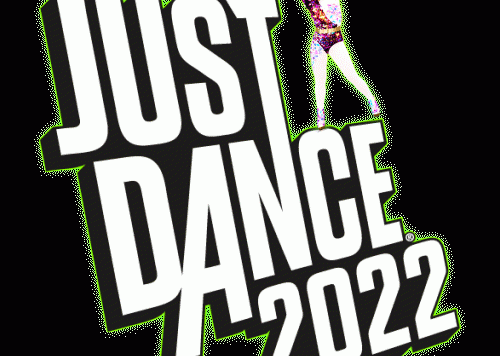I need to be up-front with you: I’ve had a hard time trying to summarise Drake Hollow. It’s so many things cellotaped together that the bare minimum – to be clear what the game is – is actually a hard bar to clear. You could say that it’s a tower defence where your resources are gathered from a reasonably vast open world, but that’s chopping out a lot of the good stuff. You could say it’s a cutesy Stranger Things, where you’re yanked into the Hollow, the game’s ‘Upside Down’, by a wise crow who wants you to play nanny to a race of Pikmin-like creatures, but that pulls story into the foreground when it spends more time in the background.
You could say that it’s the base-building and horde mode of Fortnite: Save the World (not Battle Royale), strapped to the exploration, weapons and crafting of Breath of the Wild (and, come to think of it, the Koroks), mixed with a little Slime Rancher husbandry and Sunset Overdrive grind-railing, but that would be a brain stew that no one could digest.
Let’s reset and take it step by step. The heart of the game is your base, an open glade that’s (relatively) safe, and a home to your Drakes. These Drakes are big-eyed plant creatures who are plushies waiting to happen. They are also attention-hussies, demanding water, food, entertainment and sleeping quarters if they are going to survive, and they need all of them regularly and incessantly. That means building them some amenities, like pinball machines, wells and cauldrons – the staples of any survival game – and that’s done in a very familiar, Fortnitey fashion.

But these things aren’t free. You will need resources to build them, from scrap metal to duct tape to glowstones, the world’s magical macguffins. You’ll find some in the immediate area, but to keep a steady supply you will have to trek outwards from your camp. Since this is a dark, twisted lens on the real world (more specifically, middle-America), outwards from your camp means large islands that are cut off from each other by poisonous aether, each containing some form of landmark at their centre, from churches to town halls. Get to these islands and it’s exploration time.
This is the fun bit. The islands are stacked with stuff that will progress you across a variety of progression tracks. For reasons that aren’t fully explained, there are a lot of toilets, trolleys and cardboard boxes in the Hollow, and they each explode when smashed to give you the materials you need for base-building. Then there are the landmarks, which have just enough rooms and crannies to make exploring them a joy, as you come away with some higher tier stuff, like weapons, schematics that can be used to unlock new base elements, and cosmetics. There are also tufts of grass that can be yanked up like a Super Mario 2 radish to give you Drakes to bring home, and red brambles that need to be cut down if you want to make the island an increment safer, but never completely safe.
That safety is lacking because of the monsters of the Hollow, all teeth and claws, and reminiscent of the two-colour designs of the creatures in Attack the Block. Some roam about, while others appear in a triggered ambush that are occasionally foreshadowed but still annoying/surprising, depending on your viewpoint (you’ll develop a sixth sense for these, as the devs love to create arenas in baseball fields, camp sites and other clearings). Combat is simplistic, as you have a right-trigger melee and a left-trigger ranged attack, plus a block and dodge, while the weapon system is ripped directly out of Breath of the Wild. If you disliked the feel of combat, or the flimsiness of the weapon degradation system in that game, you won’t like it here.
Spend enough time amassing resources, and you will probably get some prompts back to camp. Either your Drakes will start whining about their stocks being low, or a timer will tick down, announcing that a wave of beasts are coming at your base. If you’re like me, you will soon realise how essential the grindrail system is, and start placing down waypoints so that you can Sunset Overdrive-it down to your base with time still on the clock.
The tower-defence waves are exactly what you’d expect: hordes of creatures that you’ve already met on your travels, attacking your base/Drakes unless you chop them up with your foam hands, pizza griddles or lacrosse sticks (Drake Hollow does a fantastic line in weapon concepts). Once you’re done, you will want to level up your Drakes with crystals that you’ve salvaged, as they give better buffs and become somewhat more hardy (but no less needy). Levelling also increases the rank of your base, and a higher rank base means more things to spend your schematic points on. Set up your base for the next wave, grab some supplies, and head back on out to explore the next island.
This is just the core loop, but there’s so much more. Each map is finite and authored, rather than procedurally generated, and you can skip to the next with a ritual that will bring you to a new area, with new koroks – sorry, Drakes – and opportunities to level your camp further. Story scrolls are dropped about that half-heartedly describe a previous time, where someone like you travelled to the Hollow and met a grisly fate. Traps and decoys make the base defence more strategic.
You are probably getting a sense of how intricate and – dare I say – complicated all of this is. It’s taken me the best part of a review to map out the bare bones of the game, and I do wonder whether The Molasses Flood, the developers of Drake Hollow, will have a similar problem with getting people to buy into the game. It’s such an unwieldy proposition to market, and it will be interesting to see whether it can bring in the people it needs, because people ARE what it needs: your enjoyment of the game will be multiplied by playing cooperatively with others, and there is so much potential and breadth in the many, many systems here that it can’t help but benefit from an ongoing, live service. It will certainly have a cult following for those who find it, but I am sceptical that it will push beyond that.
The introduction to the game won’t help get boots through doors. Virtually all of the systems are chucked at you at once, with all their awkward menu controls and complicated sub-screens. The game also does a poor job of explaining what is important or unimportant: what you get in this review is infinitely more helpful than what you will get in game. Trust me when I say that waypointing is a lifesaver; that you absolutely must keep your Drakes topped up, and come back if they ever start complaining about it; and use your melee attack to reflect back the missiles from those dreaded ‘fang’ monsters.
It would be a shame if it doesn’t find a following, as I had a good time with Drake Hollow. Big props go to the audio design, which is lovely, with a signature theme that I’m humming as I write, and a score that has a propensity for becoming doomy and hi-octane on the drop of a coin. The chunky visuals aren’t showy, but handle both the darkness and light in a vibrant, attractive manner. I loved the moments in the game loop where I jumped onto a new shoreline, a looming building high above me and a shopping list of resources in my hand, hoping that I will get enough materials to build that power grid back home. I also love the homesiness of the weapons that I pick up, as my peak weapon might be something as mundane as a table leg or balloon gun.

Drake Hollow is not perfect by any means, and I suspect that fixes and feedback will improve the experience over time. Travelling is a chore, for example, as plonking down waypoints takes up too much time and too many resources, while the character is slow and the aether is time-consuming to cross. I found myself suiciding and sucking up the weapon degradation punishment just so that I could get home before one of my Drakes copped it. Complete a chapter and you will be waypointing across the map all over again, so it’s a problem that keeps on probleming.
Combat is too simplistic and awkward. There is no lock-on feature that I could find, and the more nimble enemies had a habit of nipping in and out of melee range, more nimbly than the player character can manage. Encounters felt imprecise as a result, and occasionally spiky in terms of difficulty (damn you, fang creatures!), particularly when you are ambushed. Ranged attacks are more satisfying and powerful, but you will run out of ammo far more often than you would like. Clearing the red brambles that make an island safe is also bizarrely longwinded, as they are damage-sponges that take more hits than they should, considering they don’t fight back. I would dearly have loved a way of detecting the final bramble to ‘complete’ an island without trudging backwards and forwards in search of it.
These are clear and substantial issues with the game, as they make whole swathes of the game’s loop frustrating. I had a little inward sigh whenever a notification popped about a combat wave that was about to start, as I knew I’d have to find a way back – and then get back to where I was – all with the prospect of some awkward combat inbetween. But through all of this, the game is so endearing, and the good bits so satisfying that you will be pulled through the lulls. Bring a friend or three with you, and you might even persuade someone else to handle those lulls, while you stay knee-deep in the good stuff.
What surprises me most is that Drake Hollow comes from the people who gave us The Flame in the Flood. Where their last game was tight as a drumskin, this is insanely ambitious, with its overlapping systems, it’s complexities and vast depth (there are dozens of hours of gameplay here, and not just for completionists). It’s such a ballsy move, and I hope it works for them. Clearly, it’s stretched them too thin on certain aspects of the game, but I can’t help but think that I will return to it, even more than I did Flame in the Flood, with a hope that the flaws get removed. Those Drakes won’t feed themselves, you know.
Conclusion
A sprawling, enjoyable, culty mess of a game that nails the exploration and salvaging, but fumbles the combat, base building and world traversal. Play with friends, as it files off the rough edges and makes for an intensely joyful resource-scramble.
This game was reviewed based on Xbox One review code, using an Xbox One console. All of the opinions and insights here are subject to that version. Game provided by publisher.Want to keep up to date with the latest Xt reviews, Xt opinions and Xt content? Follow us on Facebook, Twitter, and YouTube.




